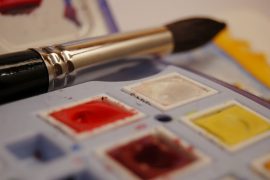It’s the last post of June, but we have a lot more summer to go. That means a lot more opportunities to enjoy the outdoors — and expose ourselves to damaging UV rays. Not only is a burn uncomfortable (or downright painful), but it comes with a whole host of other problems, from wrinkles to cancer. Take a look at these facts from the Skin Cancer Foundation:
- More than 3.5 million skin cancers in over two million people are diagnosed annually. That’s more than the combined incidence of cancers of the breast, prostate, lung and colon.
- One in five Americans will develop skin cancer in the course of a lifetime.
- Over the past 31 years, more people have had skin cancer than all other cancers combined.
- Between 40 and 50 percent of Americans who live to age 65 will have skin cancer at least once.
- One person dies of melanoma every 62 minutes.
- One or more blistering sunburns in childhood or adolescence more than double a person’s chances of developing melanoma later in life.
- A person’s risk for melanoma doubles if he or she has had more than five sunburns at any age.
So that’s a lot of numbers and statistics. (Believe me, I only shared a fraction of what I found.) But there are other really important numbers to consider: SPF or sun protection factor.
Basically, SPF is the estimate of time that you can be in the sun without burning. This is really easy math. Let’s assume that without sunscreen, you would burn after 15 minutes. If you used a sunscreen with SPF 15, you’d be able to stay in the sun 15 times as long without burning:
15 minutes • 15 = 225 minutes
225 minutes ÷ 60 = 3.75 hours
If you used a sunscreen with SPF 30, you be able to stay out twice as long:
15 minutes • 30 = 450 minutes
450 minutes ÷ 60 = 7.5 hours
But can you add SPF values? In other words, if you put on SPF 15 and then SPF 30, would you have SPF 45? Mathematically speaking, yes. But in actuality, nope. You’re only as good as the highest SPF you applied.
It’s also important to note that SPF ratings are averages. So while these calculations can help protect you from a nasty burn, you can’t count on them for down-to-the-minute protection. (There’s that imprecision-of-math thing again.)
There are also many, many other variables to consider — including time of day (sun exposure is harshest between 10:00 a.m. and 2:00 p.m.), location (water and sand reflect light, intensifying the rays) and activity levels (sweat and water can cause sunscreen to wear off).
The bottom line? You can do all of the calculating you want, but the only sure-fire way to prevent a sunburn — and the health risks associated with it — is to avoid the sun. Protective clothing can help, along with staying out of the sun when it’s at its strongest. And look for new labeling on sunscreen products. Last summer, the Food and Drug Administration (FDA) introduced new rules for these products, which will start showing up next summer.
This is perhaps the most basic math of all, so there’s no need to make it complicated. For once, you don’t need to multiply or do figures in your head. Just follow these simple rules:
1. Wear the highest reasonable SPF levels. (The FDA says SPF 50 is the best you can do.)
2. Everyone needs sunscreen. All skin types can burn or at least suffer from skin damage. So even if you have dark skin, apply sunscreen.
3. Cover up as much as possible, with broad hats, swim shirts and umbrellas.
4. Avoid the sun at peak times, especially if you plan to be on the water or beach.
5. Reapply sunscreen at least every two hours, more often if you’re sweating or getting in and out of the water.
Simple, eh?
How do you manage the sun and outdoor activities in the summer? If you have cool tips to share, post them in the comments section!
On Monday, we’ll take off on a month of travel math. Got questions? Let me know, and I’ll track down the answers.








Comments are closed.